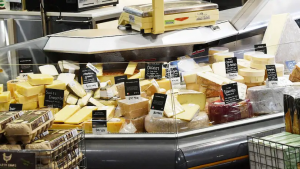
Early insights have emerged from a recent Australian Patent Office opposition decision, Fonterra Co-operative Group Ltd v Perfect Day, Inc. [2022] APO 59, where the well-known New Zealand multinational corporation Fonterra succeeded in preventing US animal-free protein early stage company Perfect Day from obtaining granted patent claims for an animal free dairy substitute product.[1]
As applied for, Perfect Day’s patent has a single independent claim[2] directed to a food composition comprising:
two identified bovine protein equivalent recombinant proteins produced in a fungal cell;
one or more sweetening agents, ash, and optionally, one or more lipids; and
one or more identified characteristics of a dairy food product including taste, aroma, appearance and mouthfeel.
Although the claim language is expressly directed to a ‘food composition’ only, the Hearing Officer construed the claim, in light of the common general knowledge and the specification as a whole as the law requires, and concluded that the claim related to a food composition that was also a dairy food substitute. This followed by reason of the references in the claim and the specification to dairy food product characteristics.
In turn, this construction gave rise to validity issues, and in particular whether the claim required the dairy food product to be suitable for use as (i.e. was an ‘acceptable’) dairy substitute.
When is a composition a food?
An objective of cell-based/animal free food companies is the development of food products that consumers will consider to be equivalent to their animal derived counterparts.
While Perfect Day submitted that it intended the patent claims to cover products that were acceptable dairy substitutes, on its face, the claim language required the food composition to possess as little as only one of the listed characteristics.
Relying on the ground of invalidity based on lack of utility (i.e. not achieving what was promised), Fonterra argued that because the substitute required only a single characteristic in common with the corresponding dairy food product, it may be a poor substitute and therefore not fit for purpose. To give a practical example, a food composition possessing the appearance of a dairy food product might otherwise taste or have a mouthfeel completely different from and so could not reasonably be considered a substitute for a dairy food. If the product was unpalatable, notwithstanding acceptable appearance, the promise of the invention to provide a ‘substitute’ for a dairy food would arguably not be met.
Also, the Hearing Officer noted the evidence led by Fonterra that there was an absence of standards by which to assess whether the characteristics of a food ‘substitute’ have been met, aside from acceptance by customers (which would ordinarily be determined by consumer tasting panels). The Officer observed that difficulties in determining when the characteristics of a food substitute are met could give rise to validity issues in relation to the ground of lack of clarity.
In the result however, the Officer determined that although Fonterra’s submissions in relation to utility highlighted the concerns the Officer expressed in relation to clarity, Fonterra had failed to demonstrate that the claimed invention would not produce a useful result in any case.
Taste test – proving infringement
Although the opposition did not concern infringement, the Officer noted that the absence of standards could make it difficult to determine if the patent had been infringed.
Indeed, although not suggested by the Hearing Officer, one can imagine a debate about consumer testing survey methodology (more usually associated with trade mark and consumer law) becoming relevant to whether an alleged infringer’s food composition was suitable as a substitute dairy food product, and/or whether it met one or more of the subjective consumer related characteristics.
Tightened requirements for support and sufficiency
Ultimately, the outcome of the opposition turned on the validity grounds of lack of support and lack of sufficiency. Perfect Day’s specification made broad reference to a subset of milk proteins and various general references to the two recombinant proteins identified in the claims, as opposed to any specific embodiment of a composition comprising the claimed proteins that achieved the desired flavour and functional properties identified.[3] Accordingly, the claims were not supported by the specification.
Further, the patent did not sufficiently disclose the invention in order that it could be performed by a person skilled in the art (in this case, a team of ‘food technologists’, as well as a microbiologist, with knowledge and skills in the preparation of recombinant proteins. The team also had knowledge of milk proteins and skills in the preparation of dairy products and substitutes).[4]
By way of legal background to the support and sufficiency invalidity grounds, the opposition was decided under the provisions of the Patents Act 1900 (Cth) after amendment by the ‘Raising the Bar’ reforms,[5] which import a higher standard for both support and sufficiency than the provisions before amendment. Despite almost ten years having passed since the amended provisions came into effect in 2014, it is only within the last few years that the new standards have begun to be applied as patents filed after the relevant date have been examined, accepted, opposed and/or litigated.
Patent claims now require closer alignment with the specification in order to meet the standard for support,[6] and the claims must not extend beyond the technical contribution to the field. For a new area of technology, like animal free foods, there may be scope for uncertainty as to the nature of the patentee’s technical contribution.
To meet the level of required disclosure, a specification must allow the person skilled in the art to work the invention across the full scope of the claims, without undue experimentation.[7] In this case, the Hearing Officer was hesitant to attribute technical knowledge to the person skilled in the art. Specifications of patent applications for new food inventions may, therefore, need to disclose use of relevant bioengineering techniques, in application to a wide range of examples, to ensure the person skilled in the art can work the invention across the full breadth of each claim.
Implications for prior art based ground of validity and expert independence
The Hearing Officer’s hesitation in attributing technical knowledge to the person skilled in the art meant that Fonterra’s lack of inventive step challenges were unsuccessful. In its argument, Fonterra claimed that it was known as at the priority date that it may be desirable to make recombinant dairy proteins, and in fact, one of its experts had been involved in research into making the two identified recombinant proteins in a fungal system.
The Officer noted that while information may be known, it must also be widely accepted, i.e. form part of the common general knowledge to provide a basis for arguing a patent’s obviousness (lack of inventive step). The Officer did not consider that the preparation of recombinant dairy proteins and, further, the use of the two identified recombinant proteins as a whey substitute, was common general knowledge as at the priority date.
Fonterra also failed in arguing lack of inventive step on the basis of two prior art documents. While these documents referred to the two identified recombinant proteins, the Officer did not consider that the person skilled in the art taking routine steps would have arrived at the specific combination defined by the claims of the patent as a matter of course.
Fonterra dropped its lack of novelty challenge prior to the hearing. While the Officer’s reasons do not explain Fonterra’s approach, formal publications disclosing inventions in a new technological field can be difficult to locate. It is interesting to contemplate, however, the possibility of lack of novelty challenges in the dynamic new foods field based on informal publications or trade displays or even consumer or other trials not adequately protected by confidentiality.
Interestingly, neither party secured classic independent experts as witnesses in the opposition. Rather, the experts who gave evidence included food science academics, food developers and individuals who had worked with the parties at a commercial level. In cases relating to new foods, where there are a limited number of players in the field, it may be difficult to locate experts who are independent as classically understood.
Notwithstanding that prior involvement, the Hearing Officer did not exclude any expert’s evidence, instead finding that it would be a factor relevant to the weight to be given to the evidence.
Appeal to provide guidance
The Patent Office decision is now on appeal to the Federal Court. The matter will be heard before Justice Rofe, a relatively recent appointment to the Court but an experienced patent lawyer, so further useful guidance ought to be forthcoming.
[1] Australian Patent No. 2015305271 (Patent).
[2] Patent Claim 1: A food composition comprising:
(i) a recombinant β-lactoglobulin protein and a recombinant α-lactalbumin protein, wherein one or both of the recombinant β-lactoglobulin protein and the recombinant αlactalbumin protein comprises a sequence that is at least 90% identical to the bovine protein amino acid sequence and has been produced by a fungal cell;
(ii) one or more sweetening agents;
(iii) ash; and
(iv) optionally, one or more lipids,
wherein:
the food composition has one or more characteristics of a dairy food product selected from the group consisting of: taste, aroma, appearance, handling, mouthfeel, density, structure, texture, elasticity, springiness, coagulation, binding, leavening, aeration, foaming, creaminess, and emulsification; and the food composition does not comprise any other milk proteins than those in (i).
[3] Fonterra Co-operative Group Ltd v Perfect Day, Inc. [2022] APO 59, [83]-[84]; [94].
[4] Ibid, [14].
[5] The ‘Raising the Bar’ reforms came into force after enactment of the IP Laws Amendment (Raising the Bar) Act 2012.
[6] Merck Sharp & Dohme Corporation v Wyeth LLC (No 3) [2020] FCA 1477 [546]-[547].
[7] Cytec Industries Inc. v Nalco Company [2021] FCA 970 [140]-[149].
























